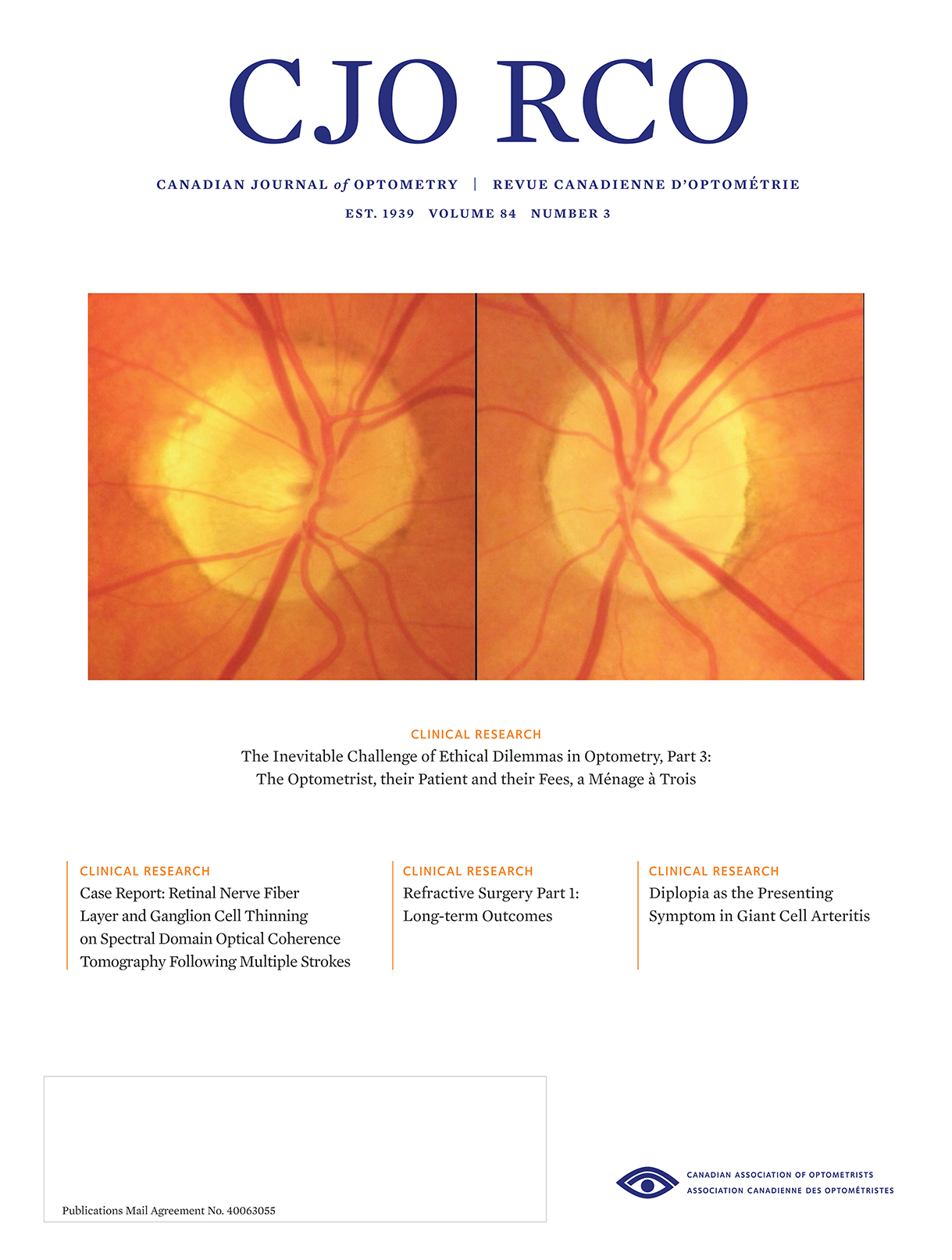

Decision trees have previously been used to diagnose glaucoma 19 however, decision trees suffer from the problem of ‘over-fitting’, which influences the diagnostic accuracy. The ‘Random Forest’ method is a decision support tool which consists of many decision trees. 18 Thus, it appears that no single structural measurement is best for diagnosing glaucoma. Conversely, GCC may be preferential to detect glaucomatous change in patients with high myopia. For example, Cordeiro et al 17 reported that the diagnostic performance of circumpapillary RNFL (cp-RNFL) thickness measurements tended to be better in patients with a small optic disc, and an inverse effect was observed using the macular ganglion cell complex (GCC) measurement. Indeed, specific structures may be preferentially damaged in any given patient. 7–14 However, in these previous studies, the different measurements were interpreted independently, yet damage to these structures does not necessarily occur in parallel 15, 16 and thus there is no consensus on which structure is optimum for diagnosing glaucoma. It has been reported that these retinal layers are damaged early in the glaucoma disease process 5, 6 and many studies have investigated the diagnostic performance of thickness measurements of these structures to discriminate between healthy and glaucomatous eyes. 3 The recent advancement of OCT from the time domain to the spectral domain OCT (SD-OCT) has greatly improved the imaging speed and resolution of the device, 4 and has enabled imaging scans of the macular RNFL (m-RNFL) and the macular ganglion cell layer and inner plexiform layer (GCL+IPL).

Optical coherence tomography (OCT) is an imaging technology widely used in the diagnosis of glaucoma, enabling high-resolution measurements of the retina. Structural changes at the optic nerve head 1 and retinal nerve fibre layer (RNFL) around the optic disc 2 can also indicate glaucomatous damage and may precede measurable VF loss. As glaucomatous visual field (VF) damage is irreversible, the early diagnosis of glaucoma is essential. Glaucoma is the second most common cause of blindness.


 0 kommentar(er)
0 kommentar(er)
